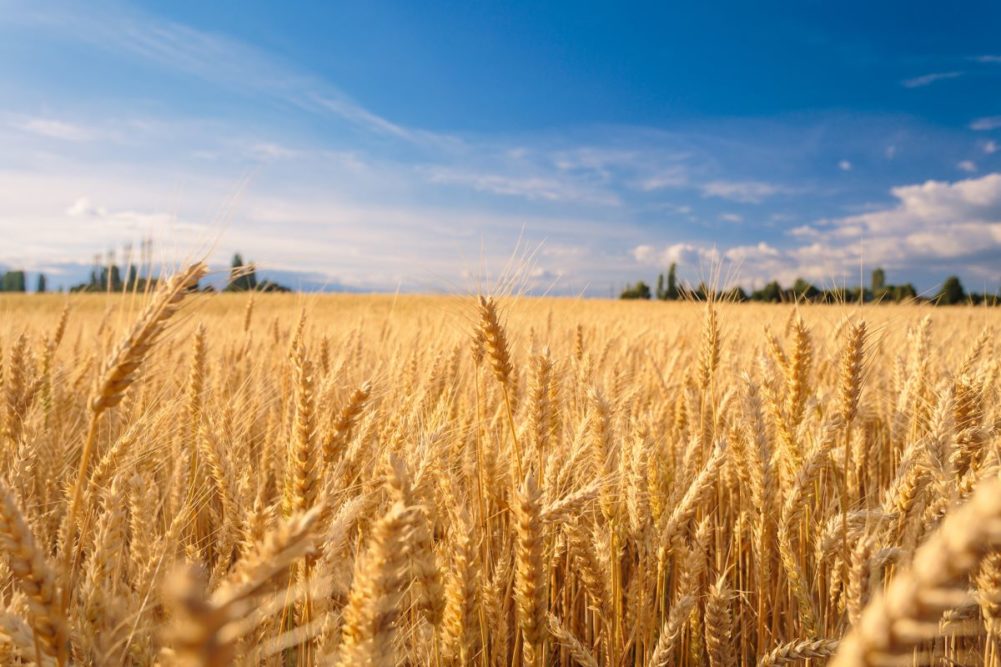Wheat is one of the most essential staple crops in India, playing a significant role in the agricultural and food processing sectors. As the second-largest wheat producer globally, India is not only self-sufficient in wheat production but also a major player in wheat products manufacturing. The wheat industry in India offers immense potential, particularly in the food processing segment, which includes a variety of products such as flour (atta), semolina (sooji), and other wheat-based food items.
India’s Wheat Production: A Cornerstone of Agriculture
India’s vast agricultural landscape supports wheat cultivation in multiple states, with the major wheat-producing regions being Uttar Pradesh, Punjab, Haryana, Madhya Pradesh, and Rajasthan. With favorable climatic conditions and advanced farming techniques, the country produces around 100 million metric tons of wheat annually. This makes India a key contributor to global wheat supply while ensuring a steady internal supply for its growing population.
The Growing Demand for Wheat Products
The demand for wheat products in India has grown significantly over the years due to the population’s rising income levels, changing lifestyles, and urbanization. Wheat flour (atta) is a core ingredient in everyday food like chapati, paratha, and other traditional Indian dishes. Moreover, the increasing popularity of ready-to-eat meals, processed foods, and snacks is driving the demand for wheat-based products, such as noodles, biscuits, and bread.
Key Wheat Products Manufactured in India:
- Atta (Wheat Flour): The most common wheat product used in India, atta is the primary ingredient for making chapatis, parathas, and other flatbreads. It is produced by milling whole wheat grains, retaining the bran, germ, and endosperm to make it nutritionally rich.
- Maida (Refined Wheat Flour): Maida is a fine white flour made from the endosperm of the wheat grain. It is used in the preparation of cakes, pastries, biscuits, and other bakery products. The growing demand for maida in the confectionery industry has opened new avenues for wheat product manufacturers.
- Sooji (Semolina): Sooji is a coarse wheat product made by grinding the endosperm of wheat. It is a key ingredient in making upma, halwa, and other traditional sweets and snacks. The demand for sooji in processed foods, such as breakfast cereals and packaged snacks, is rapidly increasing.
- Dalia (Cracked Wheat): Dalia is made by cracking whole wheat grains into smaller pieces. It is often used in porridge, soups, and savory dishes and is considered a nutritious option due to its high fiber content.
- Wheat Bran: The outer layer of the wheat kernel, wheat bran is used as a dietary fiber supplement and is also employed in animal feed. The growing focus on health and wellness has boosted the demand for wheat bran as a key ingredient in health foods.
- Wheat Germ: Wheat germ is the nutrient-rich part of the wheat grain, often used as an ingredient in cereals, energy bars, and health supplements. With the rise of the health-conscious consumer, the demand for wheat germ has increased significantly.
The Wheat Products Manufacturing Process in India
The manufacturing process of wheat products in India involves several stages, from the procurement of high-quality wheat to the final production of consumer-ready products. The process typically includes:
- Cleaning and Grading: The first step is to clean the wheat by removing foreign particles, stones, and dust. The wheat is then graded based on its quality and size.
- Milling: In this step, the wheat grains are milled to produce different types of wheat products. Modern milling techniques ensure that the flour retains its nutritional value while achieving the desired texture and consistency.
- Packaging and Distribution: Once the products are milled, they are packaged into bags or containers for distribution. The packaging is done to ensure product freshness and to maintain hygiene standards.
Challenges in the Wheat Products Manufacturing Industry
While the wheat products manufacturing industry in India has witnessed tremendous growth, there are several challenges that need to be addressed:
- Quality Control: Ensuring consistent quality across different batches of wheat products is crucial for consumer satisfaction. Investing in state-of-the-art milling and packaging technology is necessary to meet the high standards expected by consumers.
2. Supply Chain Issues: The wheat supply chain in India is often disrupted due to climatic factors, transportation issues, and inconsistent crop yields. Manufacturers need to build robust supply chain networks to ensure the uninterrupted availability of wheat for production.
3. Price Fluctuations: The prices of wheat can fluctuate due to changes in demand, supply, and global market conditions. Manufacturers must adopt strategic pricing models and risk management practices to handle these fluctuations.
4. Health Trends: Increasing health consciousness among consumers is driving demand for healthier wheat products like whole wheat atta and gluten-free options. Manufacturers need to adapt to these trends by offering innovative, healthier alternatives.
The Future of Wheat Products Manufacturing in India
The future of wheat products manufacturing in India is bright, with several growth drivers in play:
- Technological Advancements: The adoption of advanced milling technologies, automation, and AI-driven quality control processes will improve efficiency and product consistency.
- Export Potential: As a leading wheat producer, India has significant potential to export wheat and wheat products to international markets. With the rise of global demand for wheat-based products, India can establish itself as a strong exporter.
- Health-Conscious Products: With increasing demand for organic, gluten-free, and whole-wheat products, manufacturers can focus on creating healthier alternatives to meet the needs of the modern consumer.
- Sustainability Focus: Sustainability is becoming an essential factor in food manufacturing. Indian wheat manufacturers are likely to adopt eco-friendly practices, from sourcing to packaging, to align with global sustainability trends.
Conclusion
The wheat products manufacturing industry in India stands at the intersection of tradition and innovation. With a strong domestic market and growing export potential, it is poised to thrive in the coming years. By focusing on quality, embracing technological advancements, and catering to changing consumer demands, wheat manufacturers in India can continue to play a pivotal role in the global food supply chain.

